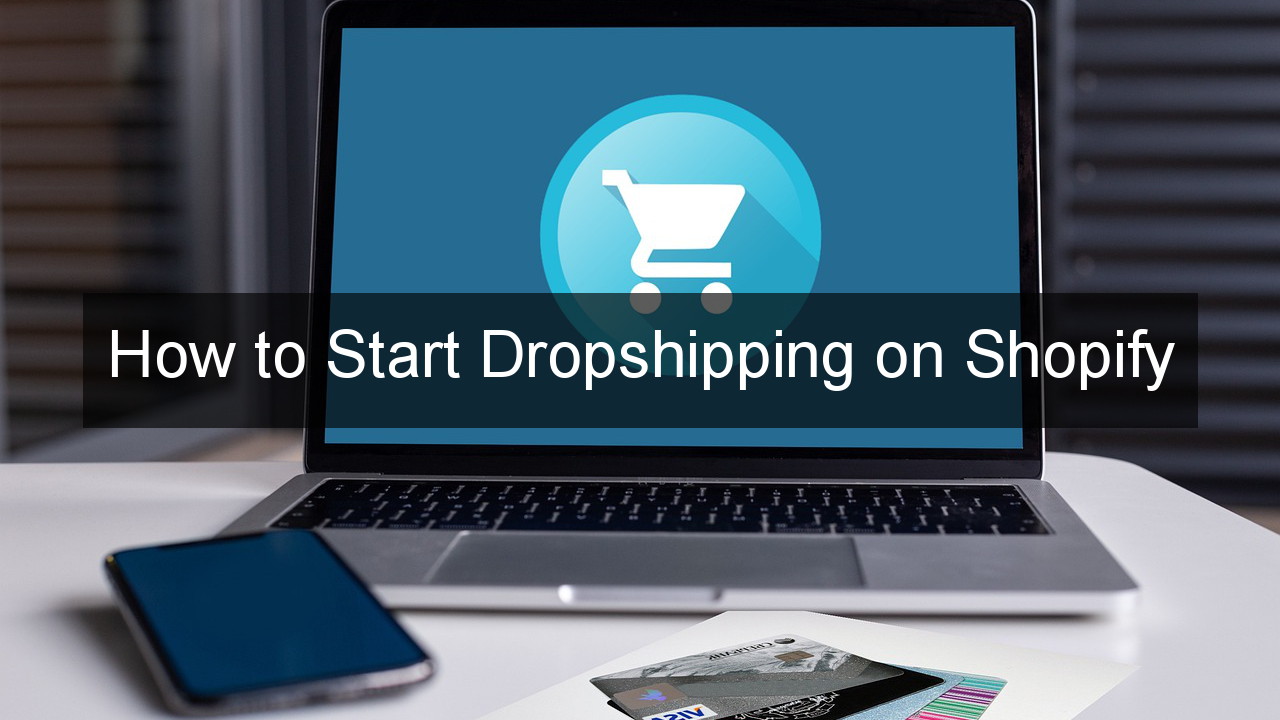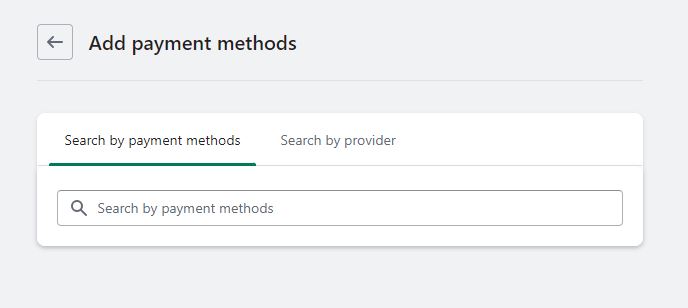Explore the step-by-step process of starting your own dropshipping business on Shopify. Learn essential tips, tools, and techniques for success in the world of e-commerce.
Are you curious about dropshipping and how it relates to Shopify? In this article, we’ll explore the concept of dropshipping and delve into how Shopify can play a crucial role in this business model. Dropshipping is an increasingly popular e-commerce method where retailers don’t maintain inventory. Instead, they collaborate with suppliers who handle product storage, packaging, and shipping directly to customers. This guide will demystify dropshipping and highlight the benefits of using Shopify. Let’s uncover the world of dropshipping and discover how Shopify can elevate your business.

Table of Contents
1. Setting up Your Shopify Store (Start a free trial)
Setting up your Shopify store is the first step in your dropshipping journey. Here are the steps you need to take to get started:
a. Sign up for a Shopify account: To start, you’ll need to sign up for a Shopify account. Head to the Shopify website and click on “Get Started” to begin the process.

b. Choose a plan that fits your needs: Shopify offers different pricing plans depending on your needs, so choose the one that suits your business goals and budget. As a dropshipping business, you may want to consider a plan that includes features like third-party shipping calculations and the ability to add unlimited products.

c. Set up your store information and payment settings: Once you’ve signed up and chosen a plan, it’s time to set up your store information and payment settings. This includes adding your store name, logo, and contact information, as well as setting up payment options for your customers. Shopify offers a range of payment options, including credit cards, PayPal, and Apple Pay, so choose the ones that work best for your business.

By following these steps, you’ll be well on your way to setting up your Shopify store for dropshipping success.
2. Finding a Niche
Finding a profitable niche is a crucial step in dropshipping on Shopify. Here are the steps you need to take to identify the right niche for your business:
a. Identify a profitable niche to sell in: First, you need to identify a niche that has high demand and good profit potential. Look for a niche that you’re passionate about, but also has a large market of potential customers. Consider the products that are currently trending and that people are actively searching for.
b. Research competitors and assess market demand: Once you have a few niche ideas, it’s time to research competitors and assess market demand. Use tools like Google Trends and keyword research tools to see what people are searching for in your chosen niche. Look at competitors’ websites and social media pages to see what products they’re selling and how they’re marketing them.
c. Consider factors like product cost, shipping, and availability: When choosing a niche, it’s important to consider factors like product cost, shipping, and availability. Look for products that are affordable to source and have reasonable shipping costs. Also, consider the availability of the products you’re selling. Make sure that the supplier you choose can reliably provide the products you need to fulfill orders.
By following these steps, you’ll be able to identify a profitable niche that has a high demand and good profit potential. This will help you build a successful dropshipping business on Shopify.
3. Sourcing Products
Sourcing products is a critical step in the dropshipping process on Shopify. Here are the steps you need to take to find reliable suppliers and source high-quality products:
a. Understand how to find reliable suppliers: To start, you need to find reliable suppliers who can provide you with high-quality products. Use platforms like Oberlo, AliExpress, and SaleHoo to search for suppliers in your niche. Read reviews and compare prices to find the best supplier for your business.
b. Evaluate product quality and pricing: Once you’ve found potential suppliers, it’s important to evaluate the quality of their products and their pricing. Look for products that are well-made and have a good reputation. Also, consider the pricing of the products to ensure that you can make a profit when selling them on your Shopify store.
c. Consider factors like shipping and delivery times: When choosing a supplier, it’s important to consider factors like shipping and delivery times. Look for suppliers who offer fast shipping times and reliable delivery services. Also, consider any additional fees that the supplier may charge, such as shipping or handling fees.
By following these steps, you’ll be able to find reliable suppliers and source high-quality products for your Shopify store. This will help you build a successful dropshipping business on Shopify.
4. Adding Products to Your Store
Adding products to your Shopify store is a key step in the dropshipping process. Here are the steps you need to take to add products to your store:
a. Use Shopify’s product importer app to add products to your store: The easiest way to add products to your Shopify store is to use Shopify’s built-in product importer. This tool allows you to upload product information in bulk, which is particularly useful if you have a large inventory of products.

b. Write compelling product descriptions and choose high-quality images: When adding products to your store, it’s important to write compelling product descriptions and choose high-quality images. Your product descriptions should be informative and highlight the unique features of your products. Your images should be high-quality and showcase your products from multiple angles.
c. Organize products into collections to make them easier to find: As you add more products to your store, it’s important to organize them into collections. Collections make it easier for customers to find the products they’re looking for, and they also make it easier for you to manage your inventory. You can organize products by category, price range, or any other criteria that make sense for your store.
By following these steps, you’ll be able to add products to your Shopify store and create a compelling online shopping experience for your customers. This will help you build a successful dropshipping business on Shopify.
5. Setting Prices
Setting prices for your dropshipping products on Shopify can be a challenging task. However, there are some key steps you can take to make this process easier and more effective. Here are the steps to follow:
a. Consider product cost, shipping costs, and overhead expenses: Before setting your prices, it’s important to consider all of your costs, including product cost, shipping costs, and overhead expenses. Make sure to factor in all of these expenses when determining the price of your products.
b. Research competitor prices and set your prices accordingly: One of the best ways to determine the right price for your products is to research competitor prices. Check out other online retailers selling similar products and see what they’re charging. Use this information to set your prices accordingly.
c. Consider offering discounts or free shipping to attract customers: To attract customers and increase sales, consider offering discounts or free shipping. These promotions can help you stand out from the competition and encourage customers to make a purchase.
By following these steps, you’ll be able to set the right prices for your dropshipping products on Shopify. This will help you attract customers and build a successful dropshipping business.
6. Promoting Your Store
Promoting your dropshipping store on Shopify is essential for driving traffic and sales. Here are the steps to follow to effectively promote your store:
a. Use social media to market your products and engage with potential customers: Social media is a powerful tool for promoting your dropshipping store. Create social media accounts for your business and post regularly to build brand awareness and engage with potential customers. Use hashtags and targeted ads to reach a larger audience.
b. Run paid advertising campaigns to drive traffic to your store: Paid advertising campaigns, such as Google Ads or Facebook Ads, can be a highly effective way to drive traffic to your store. Target your ads to your desired audience and use compelling visuals and messaging to attract potential customers.
c. Use email marketing to build a customer base and drive sales: Email marketing is a cost-effective way to build a customer base and drive sales. Collect email addresses from customers and potential customers and use them to send newsletters, promotions, and other marketing messages.
d. Content Marketing: Create informative and engaging blog posts, articles, or videos that provide value to your target audience. Optimize the content with relevant keywords to improve search engine rankings and attract organic traffic.
e. Search Engine Advertising: Consider investing in pay-per-click (PPC) advertising on platforms like Google Ads or Bing Ads. Target specific keywords related to your niche to reach customers actively searching for your products.
By following these steps, you’ll be able to effectively promote your dropshipping store on Shopify. This will help you drive traffic, build your customer base, and increase sales.
7. Fulfilling Orders
When running a dropshipping store on Shopify, order fulfillment is a critical process that can make or break your business. Here are the steps to follow to effectively fulfill orders for your store:
a. Understand how dropshipping works and how orders are fulfilled: Dropshipping means that you don’t have to handle or store inventory yourself. Instead, when a customer places an order on your website, the supplier you’re working with will fulfill the order and ship it directly to the customer. Make sure you have a clear understanding of how this process works and what your role is in fulfilling orders.
b. Use Shopify’s order management tools to process orders efficiently: Shopify has a suite of order management tools that can help you streamline your order fulfillment process. Use these tools to view and process orders quickly and efficiently, and to update customers on the status of their orders.
c. Stay on top of inventory levels to ensure timely order fulfillment: It’s important to keep track of inventory levels to ensure that you can fulfill orders in a timely manner. Use Shopify’s inventory management tools to track inventory levels and set up notifications when inventory runs low.
By following these steps, you’ll be able to efficiently and effectively fulfill orders for your dropshipping store on Shopify. This will help you maintain customer satisfaction and build a successful business.
8. Customer Service
Providing excellent customer service is essential for any ecommerce business, including a dropshipping store on Shopify. Here are the steps to follow to provide top-notch customer service:
a. Respond to customer inquiries and support requests promptly: Make sure to respond to all customer inquiries and support requests in a timely manner. This includes responding to emails, phone calls, and social media messages. Use Shopify’s customer service tools to manage and track customer interactions, and to ensure that all customer inquiries are addressed promptly.
b. Handle returns and exchanges professionally and courteously: Even with the best products and service, some customers may want to return or exchange a product. Make sure to handle these requests professionally and courteously, and to provide clear instructions on how to initiate a return or exchange. Use Shopify’s order management tools to process returns and exchanges quickly and efficiently.
c. Use customer feedback to improve your store and product offerings: Customer feedback is a valuable tool for improving your store and product offerings. Encourage customers to leave reviews and feedback, and use this feedback to make improvements to your store, product descriptions, and customer service.
By following these steps, you can provide excellent customer service for your dropshipping store on Shopify. This will help you build customer loyalty, increase customer satisfaction, and ultimately drive more sales for your business.
Conclusion
Setting up a dropshipping store on Shopify can be a profitable and rewarding business venture. By following the steps outlined in this article, you can successfully launch and operate your own dropshipping business.
First, you need to understand what dropshipping is and why it’s a popular business model. Then, you can sign up for a Shopify account, choose a plan, and set up your store information and payment settings. You can then identify a profitable niche, research competitors, and source high-quality products from reliable suppliers.
Next, you can add products to your store using Shopify’s product importer, write compelling product descriptions, and organize products into collections. You can then set prices based on product cost, shipping costs, and competitor prices. To promote your store, you can use social media marketing, paid advertising campaigns, and email marketing.
Finally, you can use Shopify’s order management tools to efficiently fulfill orders and provide excellent customer service to keep your customers happy.
In conclusion, dropshipping on Shopify can be a profitable and rewarding business venture. By following the steps outlined in this article, you can launch and operate a successful dropshipping business on Shopify. So, don’t hesitate to get started and we wish you success in your dropshipping journey!